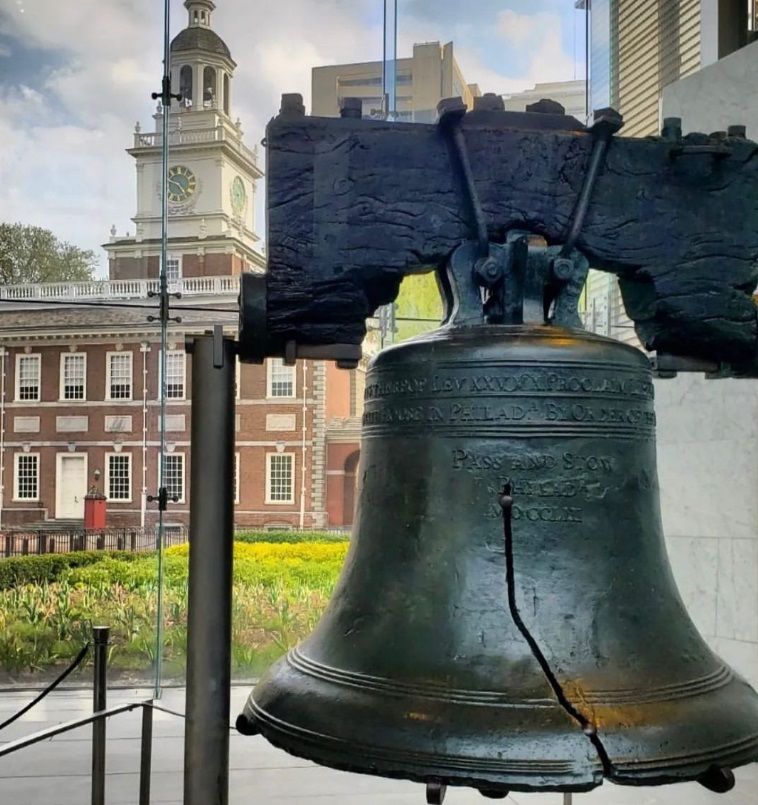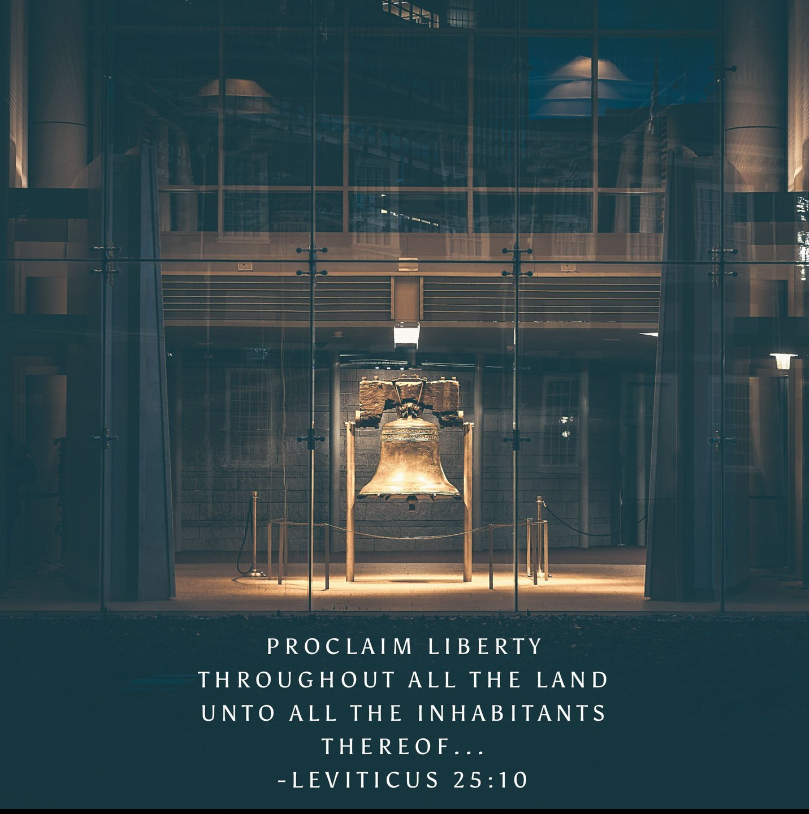My Bookings
Please Enter Your Booking Code To Find Your Booked Tour!

10 Fun and Fascinating Facts about the Liberty Bell
Table of Contents
Explore Liberty Bell with Our Premium Philadelphia Tour
The Bell was Ordered from London
Speaker of the Pennsylvania Assembly Isaac Norris in 1751 ordered the bell from Whitechapel Foundry in London in 1751. The bell is composed of bronze. Its chemical composition includes 70% copper, 25% tin, and traces of lead, gold, arsenic, silver, and zinc.
Its wooden yoke is composed of American elm. However, there exists no evidence of this yoke being its original yoke. With all this, the bell weighs approximately 2080 pounds.
Liberty Bell has Centuries Old Cracks
Yes, you read it right. The liberty bell has centuries old cracks \[which add to its beauty!\]. What’s more interesting? No one, literally no one, knows how the bell got its first beauty crack! Historians have come up with interesting stories \[that’s what you call a historical narrative that lacks evidence\].
According to popular narrative, the bell got this beauty-mark when it was first checked after its arrival in Philadelphia. The second mark occurred when the bell rang on 1846’s President’s Day. This crack runs from the abbreviation for "Philadelphia" up through the word "Liberty”.

(Credit: tomagorel / Instagram)
Liberty Bell No Longer Rings
Hard to believe? Isn’t it? But the bell served its ‘*ringing*’ purpose from 1753 to 1846 only. 1846 was the year when the bell went silent forever when it was rung \[so hard maybe\] on President’s Day that its ringing function malfunctioned due to a major crack.
Liberty Bell Has Got Interesting \[yet Confused\] Accounts of Ringing
Contrary to the popular belief that Liberty Bell rang on July 8, 1776 for the Declaration of Independence, historians contend that the statehouse steeple was under repair at that time. Hence, it is unlikely that the bell was rung on this auspicious moment.
During its functional era \[1753 to 1846\] the bell rang as announcement of the deaths of Benjamin Franklin, George Washington, Alexander Hamilton, and Thomas Jefferson.
The Wide Crack in Liberty Bells is Actually a Repair Job
Ever heard of a remedy becoming an ailment? Well, Liberty Bell’s wide crack is a testimony of this! In 1846, it was decided to repair the bell in anticipation of George Washington’s birthday holiday. The \[previously\] thin crack was widened to prevent its further spread using ‘stop drilling’ technique.
Yet the repair work turned out to be an epic failure. Next time you visit Liberty Bell, look closely, and you’ll be able to identify more than 40 drill marks! Ah! Poor Liberty Bell!

(Credit: National Park Service / Official Website)
No One Living Has Heard Liberty Bell Ringing
Ever wondered how the Liberty Bell would have sounded in its hay-days? Well, for this, you’ll have to connect to souls up there who had this privilege of hearing Liberty Bell in & before the 19th century. Woah! Who’s got the guts for that? Well, that’s the only way! As no one living today has had the honor of hearing this bell actually ringing freely with its clapper.
Liberty Bell Has a Verse Inscribed
A fact that adds holiness to the Liberty Bell is that it has been inscribed with: “*Proclaim Liberty Throughout All the Land unto All the Inhabitants thereof*”, a Biblical reference from the Book of Leviticus (25:10). Historians believe that Pennsylvania Assembly Speaker, Isaac Norris, aptly chose this verse in 1751 to commemorate William Penn's 1701 Charter of Privileges. This charter granted Pennsylvanians with religious liberties and political self-government.
This Biblical reference inscription is followed by “*By Order of the ASSEMBLY of the Province of PENSYLVANIA \[sic\] for the State House in Philada*”. Finally, the inscription provides information of those who cast the bell (John Pass and John Stow), where (Philadelphia) and when (1753).

(Credit: foundersbible / Instagram)
Liberty Bell was Titled So by the Abolitionists
1n 19th century, the verse inscribed on the Liberty Bell inspired the abolitionists in their anti-slavery movement who adopted the bell as a symbol for their movement. Abolitionists went a step further, and changed its name to ‘Liberty Bell’. Earlier, it was called the ‘State House Bell’.
Liberty Bell Went Underground for 9 Months
Fearing that the British Army could recast Liberty Bell into munitions after its possible takeover of Philadelphia in 1777, the bell was taken down and sent to Bethlehem in a heavily guarded wagon. From there, the bell traveled to Zion German Reformed Church in Northampton Town (present-day Allentown, Pennsylvania).
Here, the bell was hidden under the church floor boards until the British retreat from Philadelphia in 1778. Though returned to Philadelphia in 1778, the bell wasn’t mounted for ringing until 1785 due to poor condition of the Pennsylvania State House.
Liberty Bell Became Traveling Icon of Freedom
Liberty Bell went on its long road-trip across the country in 1866 to serve as a reminder for Americans of why they fought for independence. Making stops at expositions, fairs, exhibitions, and small towns, the bell served as a cure for a nation recovering from the nightmare of civil war.
Replica of Liberty Bell Forged to Promote Women’s Suffrage
Keeping its diverse role and iconic character in American history, a replica of Liberty Bell was forged in 1915 to promote women’s suffrage. However, its clapper was chained to the side, depicting women's silence in country politics due to denial of the right to vote. It remained silent until 1920 when the 19th amendment to the US constitution was ratified and women were given the right to vote. On September 25th, 1920, the replica bell was brought to Independence Hall, its clapper was unchained, and it was rung several times to celebrate the amendment.
It was fun to know these fascinating facts about Liberty Bell, isn’t it? So, next time you visit Liberty Bell, visit with an aplomb of knowing more than an average visitor knows about the iconic bell and its \[confused\] history! Don’t forget to narrate these fun and fascinating facts about Liberty Bell to your travel-partners \[and feel what it’s like to be a travel guide\]!
Related Blogs

Liberty Bell Tour: Exploring the Iconic Symbol of American Independence
Discover the history and significance of the Liberty Bell on our guided tour. Explore the iconic symbol of American independence firsthand.

Ayesha Munir

Places to Visit in Philadelphia at Night
Discover the best places to visit in Philadelphia at night, from historic landmarks and art museums to ice cream parlors and lively neighborhoods!

Ammara Younas

Hidden Gems in Philadelphia: Secret Places You Probably Didn't Visit
Philly has scores of secret spots that have everything to spice up your Philly-excursion! Know about 8 hidden gems in Philadelphia that should definitely be on-theme for your next visit to Philadelphia, PA, United States.

Ayesha Munir
Quick Links
Book your Tour
Get in Touch
Toll Free
1-888-961-6584
Local
1-289-271-9767
Fax
1-888-908-6056
4.8 rating | 5,753 reviews
© 2024 Tripshepherd. All Rights Reserved.
© 2024 Tripshepherd. All Rights Reserved.
4.8 rating | 5,753 reviews
1-888-961-6584

